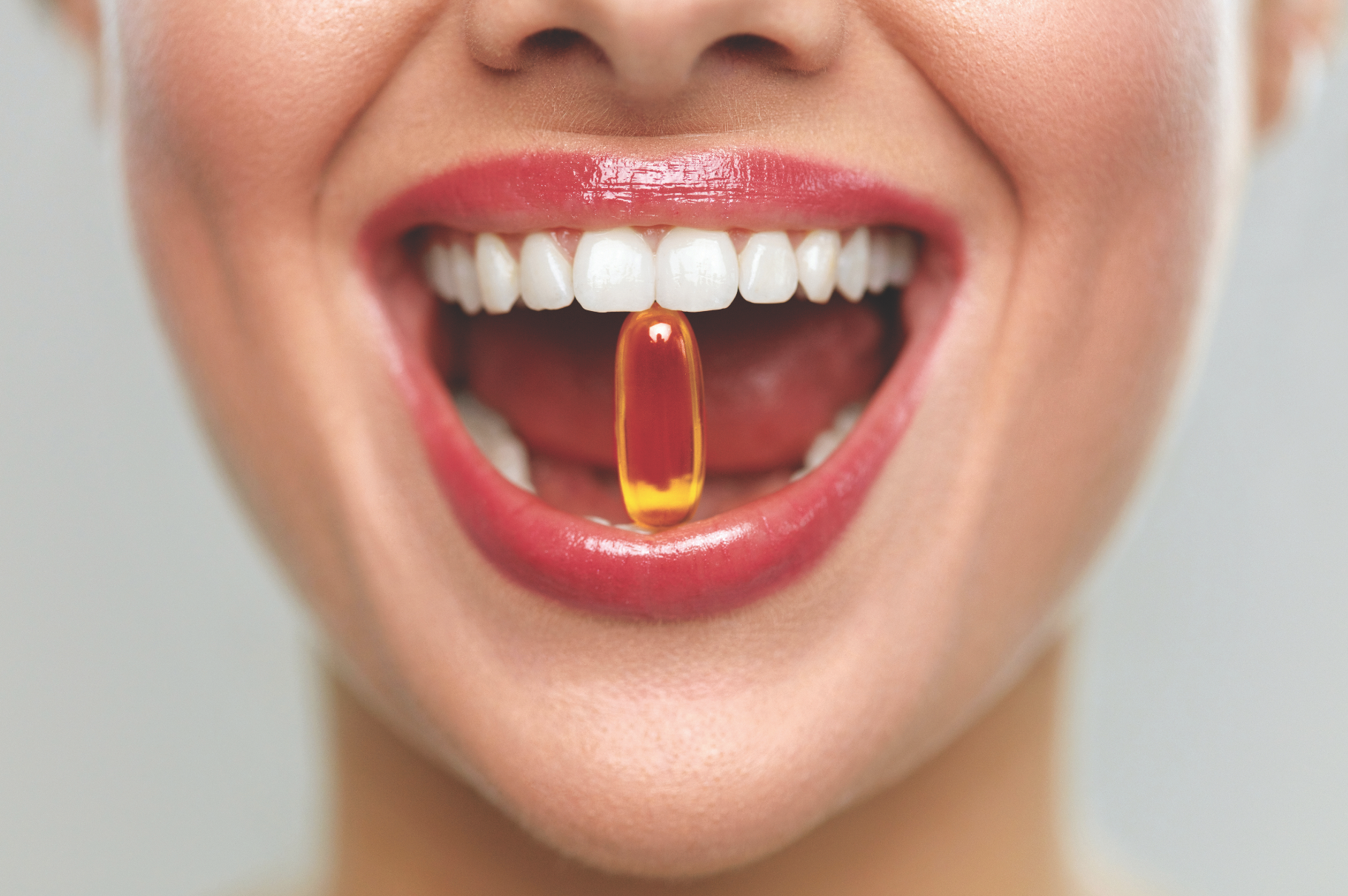Dr Donna Cosgrove PhD outlines the clinical considerations in vitamin D intake and the health risks associated with vitamin D deficiency
Vitamin D deficiency
The human body has a huge capacity to produce vitamin D: Exposing half the adult body to 50 per cent of the amount of sunlight that would cause mild sunburn 24 hours later is the equivalent to ingesting 5,000 IUs of vitamin D.1 In brighter times of the year in Ireland, just 15 minutes of skin exposure to the sun per day can be enough to achieve your RDA of vitamin D.2 However, during sun exposure before 9am or after 3pm, almost no vitamin D is produced because the light is not strong enough. Furthermore, due to the angle of the sun and absorption of UVB by ozone, almost all cutaneous vitamin D production is inhibited in the winter in countries above and below around 33 degrees latitude.1 Sunlight is only an effective source of vitamin D from April to October, according to NICE guidance.3 Worldwide, it has been estimated that between 30 and 60 per cent of children and adults are vitamin D deficient or insufficient. An app (dminder) is available that allows people to track how much vitamin D can be produced each day, wherever they are.
The WHO recognises that sensible sunlight exposure provides health benefits, including vitamin D production, however, it is difficult to define this sensible sunlight exposure level considering the wide range of variables such as skin pigmentation, latitude, altitude and time of the day.1
Sources of vitamin D
The primary source of vitamin D3 (80-to-90 per cent of body stores) is sunlight. In sunlight, 7-dehydrocholesterol absorbs UVB radiation, producing previtamin D3 which isomerises into the stable vitamin D3 (cholecalciferol). In the liver this is hydroxylated (25-hydroxylase) to 25-hydroxyvitamin D. When this travels through the kidneys it is transformed into its active form, 1,25-dihydroxyvitamin D (1,25(OH)2D) by 1-alpha hydroxylase.1,4
When sun lotion is applied properly, it absorbs up to 97.5 per cent of UVB, therefore decreasing vitamin D production by 97.5 per cent. Clothing and glass absorb all UVB, preventing vitamin D production.1 One factor that may contribute to the widespread vitamin D insufficiency is a lack of acknowledgment that sun exposure is the largest source. Few types of food naturally contain vitamin D: Oily fish (salmon, tuna, mackerel), mushrooms (when exposed to sunlight) and cod liver oil.1 Some meat (beef and pork) may also contain vitamin D, and there are small amounts in egg yolks. Some food products such as milk, cereals and fat spreads are also fortified with vitamin D.3
Vitamin D levels
After vitamin D2 or D3 supplements are consumed, they undergo the same reaction as above: Hydroxylation in the liver to form 25(OH)D2 or 25(OH)D3, sometimes collectively referred to as 25(OH)D. This is the principal index of vitamin D levels.4 In contrast to 25(OH)D, circulating vitamin D3 or cholecalciferol is generally not a good indicator of vitamin D status because it has a short half-life of 15 hours and serum concentrations are closely regulated by parathyroid hormone, calcium, and phosphate.5 Levels of 25(OH)D do not usually decrease until vitamin D deficiency is severe.
In brighter times of the year in Ireland, just 15 minutes of skin exposure to the sun per day can be enough to achieve your RDA of vitamin D
The threshold indicating healthy vitamin D levels was changed from 10ng/ml to 20ng/ml by the Institute of Medicine (IOM) in 1998. In 2011, accumulating evidence showed a link between serum levels of between even 21 and 29ng/ml with vitamin D deficiency osteomalacia.1 Based on a review of available data, the IOM concluded that serum 25(OH)D concentrations <30nmol/L (<12 ng/ml) lead to risk of vitamin D deficiency. Some individuals are even potentially at risk for inadequacy at levels ranging from 30-to-50 nmol/L (12-to-20ng/ml). Nearly everyone is sufficient at levels ?50nmol/L (?20 ng/ml): This is the serum 25(OH)D level that covers the needs of 97.5 per cent of the population.5
In the UK, the National Diet and Nutrition Survey in showed that 8 per cent of adults (aged 19-to-64) had a low vitamin D status from July to September, compared to 39 per cent in January to March.3 In Ireland, it was shown in 2013 that the year-round prevalence rates for serum 25(OH) D concentrations (in 1,132 healthy Irish adults) below 30, 40, 50, and 75nmol/L were 6.7 per cent, 21.9 per cent, 40.1 per cent and 75.6 per cent, respectively.6 This shows that while serum 25(OH)D concentrations indicative of vitamin D deficiency only occur in 6.7 per cent of the population, 40.1 per cent have levels considered by the IOM as being inadequate for bone health.
The HSE has created a system that priorities those likely to benefit from vitamin D supplementation the most in order to help decide who to test. There are two groups in this category, patients with metabolic bone disorders (Group 1), and patients with conditions that may be related to vitamin D deficiency (Group 2). Asymptomatic individuals are not recommended for screening, but dietary advice and healthy daylight exposure advice is recommended for those at risk of vitamin D deficiency.
Risk factors
- The following groups are most at risk from vitamin D deficiency and insufficiency:1,2,3,5
- Older people, due to a decrease in the cutaneous synthesis of vitamin D with increasing age.
- Pregnant women.
- People with darker skin, because longer exposure to sunlight is required to synthesise vitamin D.
- Obese children and adults — obese adults need up to three times more vitamin D than adults with a healthy BMI. This is due the fat solubility of vitamin D: It becomes diluted in body fat and its bioavailability decreases.
- Adults who do not receive direct sun exposure.
- Infants aged 0-12 months: For breast-fed babies, vitamin D requirements cannot ordinarily be met by human milk alone. The vitamin D content of human milk is related to the mother’s vitamin D status however, so mothers who supplement with high doses of vitamin D may have correspondingly high levels of this nutrient in their milk. Regardless of the type of milk, adequate vitamin D status during the rapid growth and development during the first 12 months of life is crucial for the healthy development of the skeletal system.
- Individuals who have a reduced ability to absorb dietary fat, ie, individuals with some forms of liver disease, cystic fibrosis, coeliac disease, Crohn’s disease, and some people with ulcerative colitis.5

Deficiency-related disease
The link between D deficiency and bone diseases, ie, rickets, osteomalacia and osteoporosis, is long established, but an increasing number of additional diseases have been associated with vitamin D deficiency.4 Vitamin D affects cell muscle metabolism, partially through its effect on vitamin D receptors (VDR). These are found in skeletal muscle cells and specifically bind 25(OH)D. Vitamin D contributes to muscle strength, with deficiency leading to muscle weakness. This is important in terms of an increased fall risk in older individuals.4 A Cochrane review found that vitamin D supplementation in care home residents decreased the rate of falls by 27 per cent.
Vitamin D deficiency is also linked with an increased risk of mortality from cardiovascular disease.1 A significant decline in cardiovascular mortality is evident as serum concentrations increase up to 30ng/ml (75 nmol/L).
Prospective and retrospective epidemiologic studies suggest that levels of 25OHD below 20ng/ml (50nmol/L) are associated with a 30-to-50 per cent increased risk of colon, prostate, and breast cancer, along with higher mortality from these cancers.9
25(OH)D levels are also negatively correlated to prevalence of type 2 diabetes and inflammation. Vitamin D can play a role in immune function inhibiting inflammatory reactions and autoimmune diseases. Many immune cells in the human body express VDR. VDR is highly expressed in brain tissues, suggesting that vitamin D may be involved in the development and function of the brain. Some studies have suggested that there is an association between decreased vitamin D levels and neurocognitive decline, dementia, depression, and Alzheimer’s diseases. According to the HSE, there is no consensus at present on whether vitamin D deficiency has clinically important effects on conditions outside of the skeleton and musculoskeletal system, and there is likewise no consensus on sufficient levels to avoid these problems.2
Vitamin D supplementation
Two types of vitamin D supplements are available: Ergocalciferol (vitamin D2) and cholecalciferol (vitamin D3). D2 is produced commercially from UV irradiated yeast and is present in mushrooms exposed to sunlight. D3 is the molecule produced in the skin when in sunlight and is also in oily fish and cod liver oil.1 D3 supplements are derived from fish oil, or else produced from lanolin in sheep’s wool. In terms of supplementation, D3 and D2 are both effective. Seafood vitamin D is probably derived from plankton rather than the fish synthesising the vitamin D. Dairy products, mainly fortified ones, are also a good source of vitamin D.2 Vegans seeking a vitamin D supplement should be offered D2. The HSE recommends a daily 5µg (200IU) vitamin D supplement for all infants in Ireland, from birth to 12 months of age.7
There is some evidence8 to show that cholecalciferol (D3) is more efficacious at raising serum 25(OH) levels than ergocalciferol (D2). Most fortified foods are fortified with ergocalciferol, which is cheaper, but not as well absorbed as cholecalciferol. So ‘fortified’ foods are only a help, but not a real solution for the vulnerable groups. Vitamin D3 could potentially become the preferred choice for supplementation.8
According to NHS recommendations,9 everyone (including pregnant and breast-feeding women) should consider taking a daily supplement containing 10µg (400IU) of vitamin D during the autumn and winter. A daily supplement is also recommended throughout the year if an individual:9
- Is not often outdoors, ie, frail or house-bound.
- Is in an institution like a care home.
- Usually wear clothes that cover up most of your skin when outdoors.
- Has dark skin, ie, people with African, African-Caribbean or south Asian background.
Vitamin D toxicity is rare, although it can be caused by ingestion of excessively high quantities of vitamin D for a prolonged amount of time. Toxic levels cannot be produced by sunlight exposure because excess vitamin D is destroyed by the sun.1 The Endocrine Society suggests that 4,000 IUs daily is the upper limit of dosing for children, but for adults this is up to 10,000 IU due to the requirements of obese individuals.
Health professionals could make a significant difference if they help ensure that those at risk of vitamin D deficiency understand the importance of this and encourage a daily supplement. Many people are unaware that it is not possible to make adequate amounts of vitamin D from sunlight during the winter months and that a balanced diet alone will not suffice.3







